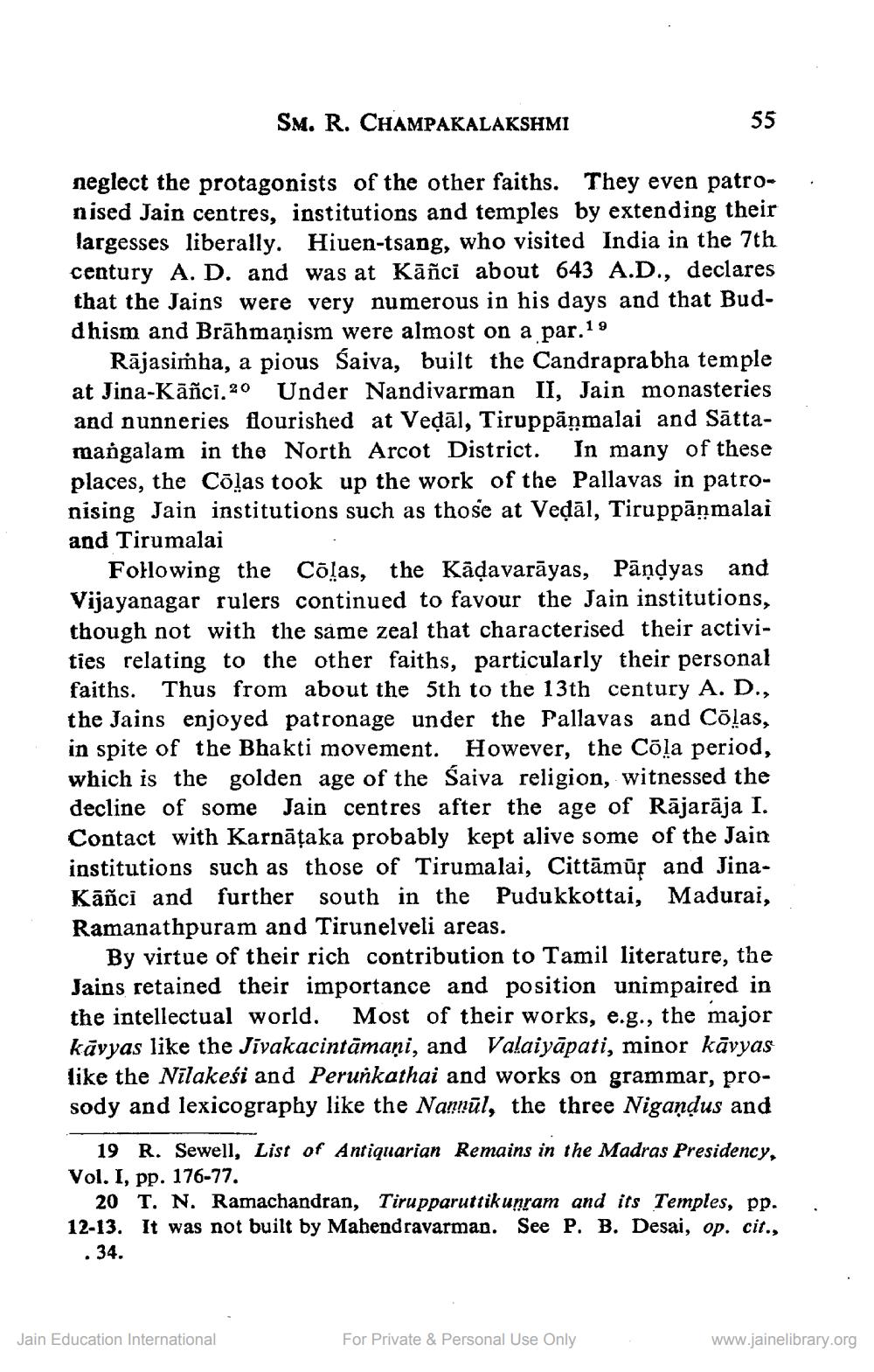________________
SM. R. CHAMPAKALAKSHMI
55
.
neglect the protagonists of the other faiths. They even patro- nised Jain centres, institutions and temples by extending their largesses liberally. Hiuen-tsang, who visited India in the 7th century A. D. and was at Kāñci about 643 A.D., declares that the Jains were very numerous in his days and that Buddhism and Brāhmaṇism were almost on a par. 19
Rājasimha, a pious Saiva, built the Candraprabha temple at Jina-Kāñci.20 Under Nandivarman II, Jain monasteries and nunneries flourished at Vedāl, Tiruppanmalai and Sāttamangalam in the North Arcot District. In many of these places, the Cõlas took up the work of the Pallavas in patronising Jain institutions such as those at Veļāl, Tiruppāņmalai and Tirumalai
Following the Colas, the Kādavarāyas, Pāņdyas and Vijayanagar rulers continued to favour the Jain institutions, though not with the same zeal that characterised their activities relating to the other faiths, particularly their personal faiths. Thus from about the 5th to the 13th century A. D., the Jains enjoyed patronage under the Pallavas and Cālas, in spite of the Bhakti movement. However, the Cola period, which is the golden age of the Saiva religion, witnessed the decline of some Jain centres after the age of Rājarāja I. Contact with Karnāțaka probably kept alive some of the Jain institutions such as those of Tirumalai, Cittāmūs and JinaKāñci and further south in the Pudukkottai, Madurai, Ramanathpuram and Tirunelveli areas.
By virtue of their rich contribution to Tamil literature, the Jains retained their importance and position unimpaired in the intellectual world. Most of their works, e.g., the major kāvyas like the Jivakacintāmaņi, and Valaiyāpati, minor kāvyas like the Nīlakesi and Perunkathai and works on grammar, prosody and lexicography like the Nannūl, the three Nigandus and
19 R. Sewell, List of Antiquarian Remains in the Madras Presidency, Vol. I, pp. 176-77.
20 T. N. Ramachandran, Tirupparuttik unram and its Temples, pp. 12-13. It was not built by Mahendravarman. See P. B. Desai, op. cit.,
.34.
Jain Education International
For Private & Personal Use Only
www.jainelibrary.org




